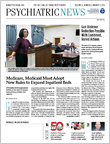Cocaine abuse represents a significant health problem worldwide, but there are few treatment options available. Moreover, there are currently no FDA-approved medications for cocaine use disorder, so people are typically given drugs to help with symptoms that arise during cocaine withdrawal.
While some potential pharmacological agents are being tested in clinical trials, another promising avenue has also emerged: repetitive transcranial magnetic stimulation, or rTMS.
This noninvasive approach to stimulate targeted brain regions using magnetic pulses has been approved for depression since 2008 and is also being tested for alcohol and nicotine addiction.
Until now rTMS had not been tried for cocaine addiction, but a newly published pilot study of 32 people with cocaine use disorder found that rTMS was far superior to pharmacological treatment (a mix of agents to help manage depression, anxiety, and sleep problems).
Over a 29-day test period, 69 percent of participants who underwent rTMS in their dorsolateral prefrontal cortex (DLPFC) did not test positive for cocaine, compared with 19 percent in the pharmacological group. After that, all the pharmacological participants were invited to switch to rTMS for a 63-day follow-up period, and during this time, 70 percent of these users remained abstinent.
In addition to the abstinence measures (which were objectively quantified through urine tests as opposed to self-reporting), the participants in rTMS reported lower craving scores than the pharmacological group.
“As with all preliminary studies, caution is necessary, and there is still a ton of work to do to prove that these improvements are real,” lead study author Antonello Bonci, M.D., a scientific director at the National Institute on Drug Abuse, told Psychiatric News. “But that shouldn’t dampen the enthusiasm for the potential of this work.”
The study was published December 3, 2015, in European Neuropsychopharmacology.
Bonci noted the use of urine analysis as a strength, especially since each participant was assigned a family guardian to watch over him or her, even when giving the urine samples.
Also, the rTMS produced very few side effects and maintained a 100 percent compliance rate during the study period. “This is important because it does not matter how theoretically tolerable a treatment is if the patients do not want to come back for more sessions,” Bonci said.
The seeds for this study were planted just a little over two years ago, when Bonci and his team at NIDA published a study showing that stimulating the prefrontal cortex in cocaine-seeking rats using laser light (a tool known as optogenetics) could abolish their addictive behavior.
That finding attracted media attention, including a short newspaper story in Bonci’s home country of Italy that was read by a medical doctor who was treating a young man with a long-standing and treatment-resistant cocaine problem.
The doctor reached out to a colleague at the University of Padua to try rTMS—and it worked. This resulted in tests in additional patients and eventually a clinical trial. As of today, the clinic has seen 70 patients, some for as long as two years and almost two-thirds of them are still clean.
Bonci and his collaborators are now designing a larger study using sham stimulation as the control instead of medication to better clarify rTMS’s effectiveness. This is critical as he noted that people who volunteer for addiction studies—known as treatment seekers—are more prone to the placebo effect.
This study was supported by IRCCS San Camillo, Novella Fronda Foundation, the University of Padua, and the Intramural Research Programs of NIDA and NIAAA. ■
An abstract of “Transcranial Magnetic Stimulation of Dorsolateral Prefrontal Cortex Reduces Cocaine Use: A Pilot Study” can be accessed
here.

